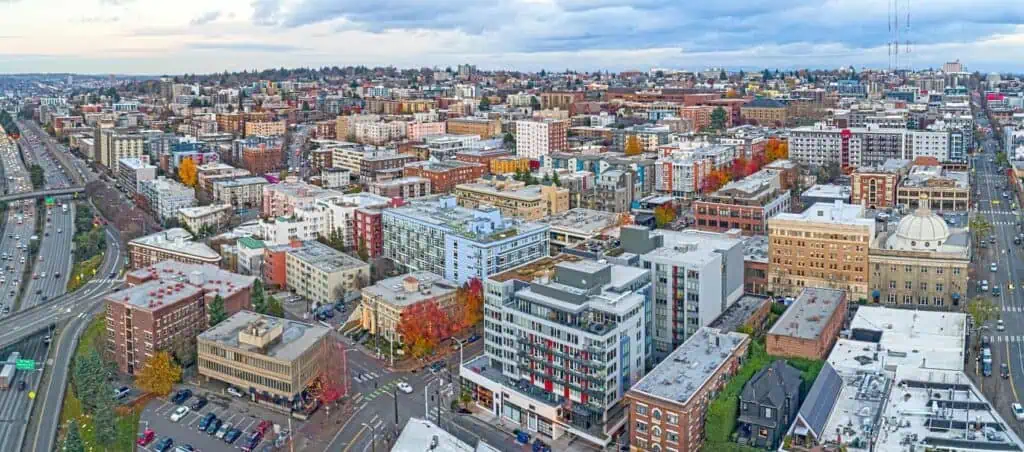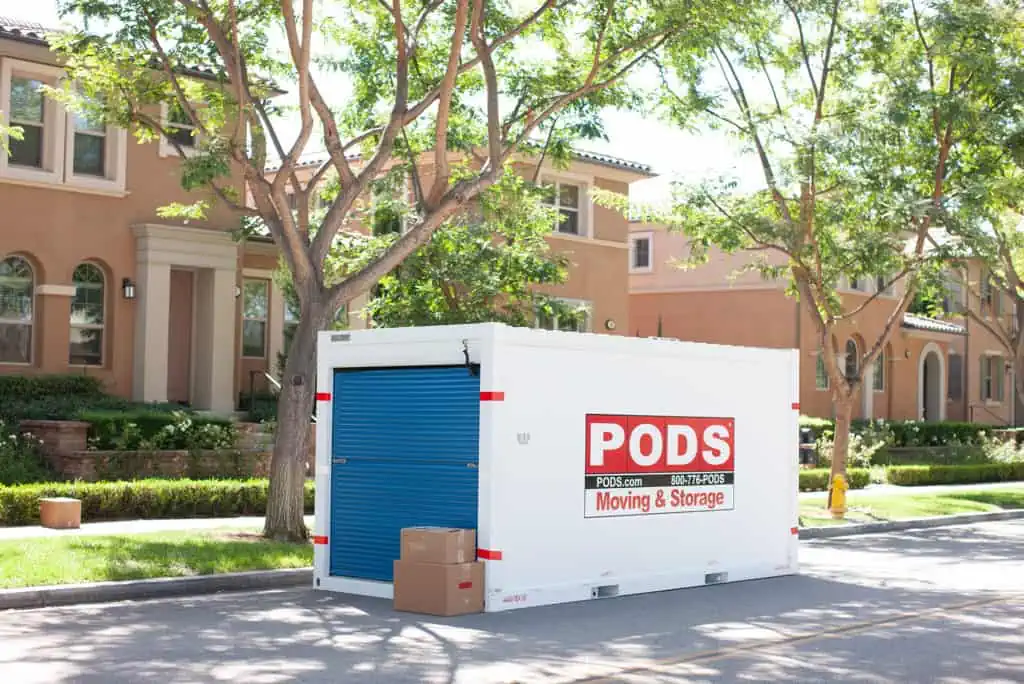The name Seattle elicits some clear and common images: coffee culture, the twin tech behemoths Amazon and Microsoft, the birth of grunge music…and rain. Lots of rain.
But the story of Seattle goes much deeper than this.
In the Emerald City, you’ll also be treated to a vibrant and multicultural food scene, a sports fan’s paradise with professional baseball, football, soccer, and women’s basketball teams calling the city home, and a world of natural wonders just a short drive away at three incredible national parks.
That should give you an idea of why people put up with the weather, but for the prospective resident, there’s even more to delve into. So let’s take a closer look.
Quick Facts About Seattle
- Population: With around three-quarters of a million residents, Seattle is the largest city in the Pacific Northwest. The wider metropolitan area is home to 3.5 million people, putting Seattle at the center of the 12th largest metro area in the US. and has doubled in size since 1980.
- Rent and Housing: According to Redfin, the median price for a home listed for sale in Seattle is $885,000, a 6.0% increase over the previous year. RentCafe tells us the average rent for all apartment types is just above $2,200, with 55% of all available units going for $2,000 or more.
- Cost of Living: According to Payscale, the cost of living in Seattle is a whopping 50% above the national average. US News & World Report puts Seattle at #18 on their list of Most Expensive Places to Live, higher than any other city in the PNW. The biggest factor here is housing, with Seattle coming in at 111% above the national average.
- School Rating: Niche gives Seattle Public Schools an overall grade of A-, ranking them #17 out of the 250 school districts across Washington State. As always, there is some degree of variation among the schools within the district, so check out the individual listings for the schools in your prospective neighborhood to get a better idea of what’s available.
- Quality of Life: According to Numbeo, Seattle scores high for purchasing power, health care, and climate. This is balanced out by lower scores dragged down by the cost of living and commute scores, along with a moderate score in safety. Worldwide, Numbeo puts Seattle at #20.
Even with the expense, deciding to move to a place as bustling and beautiful as Seattle isn’t difficult. Choosing your neighborhood might be. Here are our favorites to give you a jump start on your relocation to this emerald jewel of the Pacific Northwest.
Best Seattle Neighborhoods for 2024
Pioneer Square
Pioneer Square touts itself as Seattle’s first neighborhood, and the old town architecture adorning the streets makes this fact readily evident. But the maze of sidewalks and passageways under the streets adds a whole different layer to the area’s history, including ghost stories and an urban waterfall.
But Pioneer Square is also big on modern amenities, with tons of dining and boutique shopping options, along with a colorful art scene highlighted by the neighborhood’s First Thursday Art Walk. Sports reign down at the south end of the Square, with Lumen Field hosting Seahawks football, Sounders soccer, and a ton of other events including the 2026 FIFA World Cup. The nearby T-Mobile Park is the home of Mariners baseball, too!
So whether you’re a fanatic for your particular team or you’d love to live above some of the most intriguing parts of Seattle, Pioneer Square is a great place to settle.
Queen Anne – Lower & Upper
Northwest of downtown Seattle lies Queen Anne, a neighborhood comprised of two distinct areas. Lower Queen Anne (also referred to as Uptown), is great for those seeking the big city vibe that still offers elements of the world outside the concrete jungle.
Described in the Seattle Times as “a bar district, but also an arts district with a focus on the performing arts and big concentrations of mixed housing,” the neighborhood offers plenty of excellent dining, shopping, and entertainment. This is centered in the Seattle Center, where you can find the iconic Space Needle, Fisher Pavilion, and the Museum of Pop Culture.
“And you absolutely can’t beat the wide world of dining options in [Fremont] — few other neighborhoods have the same kind of variety.”
The Upper Queen Anne neighborhood, on the other hand, is rich in Victorian-style homes with generous yards and fantastic views. Among all of the charming facades is an array of restaurants, coffee shops, and bars you can explore and visit along the Queen Anne Boulevard loop. Because of the style and types of homes, the area is perfect for families, young professionals, and students attending Seattle Pacific University. But even if you don’t fall into any of those categories, both neighborhoods offer new residents a great place to have a home.
Madrona
A neighborhood within the larger Central district, Madrona is named for the trees you can find throughout the area. It’s known, at least to its residents, as The Peaceable Kingdom and has a relaxed vibe that would not suggest the area is only a few miles away from downtown.
To add to the laid-back and community-focused atmosphere are the local local Farmers Market, volunteer events, and the annual Mayfair. The neighborhood is also premium for those who like being a little closer to nature. On top of being right on the banks of Lake Washington, it’s also close to the Madrona Ravine and waterside Madrona Park with its adjacent sandy beach.
You won’t really find a traditional nightlife here, but the food and coffee are as good as anywhere else in the city, and for many, the quiet is actually a perk. If you’re one of them, look no further than Madrona for your perfect-fit neighborhood.
Capitol Hill
This neighborhood just northeast of downtown is one of Seattle’s most iconic and esteemed areas for nightlife, restaurants, and independent shops. You’ll find a dizzying array of options to feed your interests, much of it along the Pike/Pine Corridor or up and down Broadway. In between these two thoroughfares is Cal Anderson Park, a neat rectangle of open green spaces featuring sports courts, a playground, and footpaths.
Volunteer Park is in the northeast corner of the neighborhood, and boasts fifty acres of park land and cultural pursuits including a conservatory, the Seattle Asian Art Museum, and the intriguing and quirky Water Tower for a 360° view of the city. Best of all, Capitol Hill is a hub for a lot of transportation around the city, including the light rail and many popular bus lines.
Mt. Baker
Mt. Baker is a neighborhood that’s known for its schools, family-friendly environment, and even its nightlife – the latter consisting of the wealth of restaurants, taprooms, and coffee shops concentrated along and around Ranier Avenue. With resources like Colman Park and events like Bicycle Weekends put on by the Mt. Baker Community Club, residents here have ample chance to truly feel part of their community.
The area in general is fantastically green, with plenty of wider expanses of nature up in Sam Smith Park (I-90 actually runs underneath it!) and Mt. Baker Park, which leads to lovely and winding Mt. Baker Boulevard. You can also play along the lakeshores at Lake Washington Boulevard Park, which offers more than a mile of parkland and beaches. And when you want to dive into more urban climes, the heart of downtown is just a twenty-minute bus ride away.
Fremont
Home of the Fremont Troll and the Center of the Universe sign, this neighborhood really earns its reputation as the quirky and eclectic area of Seattle. You can also find over fifty art installations throughout the area and a First Friday Art Walk that brings you in touch with the creativity of local artists. And you absolutely can’t beat the wide world of dining options in this area — few other neighborhoods have the same kind of variety.
Being so close to the water, you also get some green spaces with waterfront views, like Fremont Canal Park and Fremont Peak Park, with a hilltop view of the Puget Sound. And even with all of this to offer, there’s one more perk to Freemont: proximity to other popular neighborhoods. It’s a stone’s throw away from Queen Anne, Greenlake, and the University District, with access to public transportation that will take you throughout the city, and really does make it feel as though the whole universe is right at your feet.
West Seattle
Made up of several sub-neighborhoods, this slice of Seattle sits on a massive “thumb” of land, surrounded on two sides by the Puget Sound and separated from downtown by the Duwamish Waterway. If you’re looking for a life that’s all about the natural surroundings, West Seattle is a great place to be. It’s home to Seattle’s largest contiguous forest, the West Duwamish Greenbelt, which overs over 500 acres and is filled with walking trails. And if the forest isn’t your thing, outdoor spaces like Me-Kwa-Mooks Park, Alki Beach Park, and Hamilton Viewpoint Park highlight the area’s miles of shoreline.
“…the median price for a home listed for sale in Seattle is $885,000, a 6.0% increase over the previous year[, and] the average rent for all apartment types is just above $2,200…”
If you prefer the indoors, though, don’t fret! There are a ton of dining and drinking options in the central Junction area, along with events and community activities. Several bus routes cover the broad West Seattle neighborhood and connect to downtown, as do the water taxis. So if you’re looking for quieter living close to nature while still being close to the metro’s core, West Seattle absolutely fits the bill.
This list of our favorites is far from exhaustive. There’s also Columbia City, an attractive extension of Mt. Baker, and historic Ballard sits right next door to Fremont. Belltown pulses with nightlife and music, and the University District has the kind of character you might expect from its name.
Now that you’ve gotten a primer on all that Seattle has to offer, you can find the perfect neighborhood for your new home.









 It’s officially moving season, AKA the four months of May through August when the majority of moves in the United States take place every year.
It’s officially moving season, AKA the four months of May through August when the majority of moves in the United States take place every year. Among cities with a statistically representative number of respondents, people from
Among cities with a statistically representative number of respondents, people from 
 Besides more typical reasons for moving such as family, jobs and housing, a few recent developments in the news have also impacted moving plans this year.
Besides more typical reasons for moving such as family, jobs and housing, a few recent developments in the news have also impacted moving plans this year. Unaffordable for Most: Finances Continue to Hold Americans Back from Moving
Unaffordable for Most: Finances Continue to Hold Americans Back from Moving
 California
California
 It’s sensible for corporations to seek better fiscal conditions for their business. But what about the employees that get caught up in corporate relocations and transfers?
It’s sensible for corporations to seek better fiscal conditions for their business. But what about the employees that get caught up in corporate relocations and transfers?